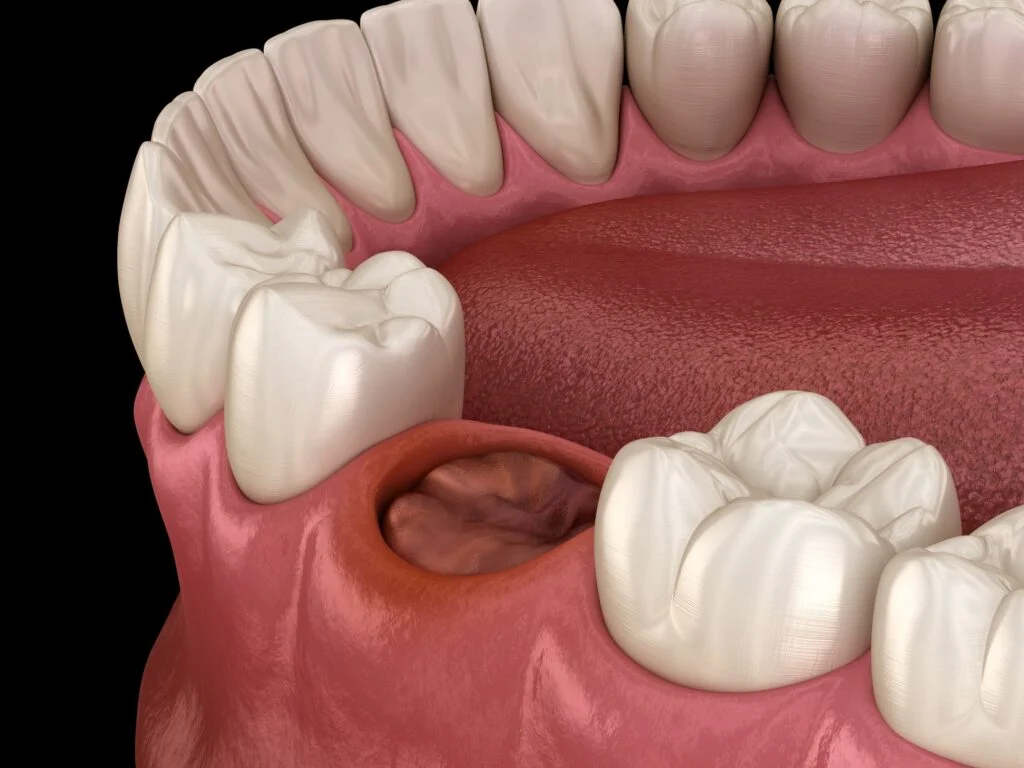Tooth Extraction:
A tooth extraction is a dental procedure that removes your tooth completely from its socket. Tooth extraction may be required for a variety of reasons, including severe damage or decay.
A tooth extraction, one of the most common dental procedures, can eliminate bacteria and improve your overall oral health.
What is a dry socket?
A dry socket can occur following tooth extraction. When a tooth is extracted by your dentist or oral surgeon, a blood clot forms in the tooth socket (a hole in the bone where your tooth was). A dry socket occurs when the blood clot dislodges (moves) or fails to form. Your bones and nerves are exposed to the oral environment without the clot. A dry socket can be painful and cause the surgical site to heal more slowly.
What causes a dry socket after tooth extraction?
The possible risk factors are:
- A difficult tooth extraction which causes trauma at the surgical site.
- Poor oral hygiene can lead to bacterial contamination.
- Using oral contraceptives (birth control).
- Furthermore, anything that dislodges the blood clot from your extraction site increases your risk of dry socket, such as:
- Drinking through a straw after having a tooth extracted.
- Smoking
- Swishing too vigorously.
What are the symptoms of dry socket?
- Pain in your mouth and face worsening two to three days after the extraction.
- Tenderness
- Bad breath.
- Bad taste.
Treatment of the dry socket
- Cleaning and dressing the affected area.
- If you have dry socket, your dentist will clean it to remove any food or other particles. This may help to relieve pain and prevent infection.
- Your dentist may also apply a medicated dressing or paste to the socket to help numb the pain.
- If the dressing needs to be removed, you’ll need to see your dentist again in a few days. If the pain persists, the dressing may need to be changed. Otherwise, you may be told to remove it at home and then clean the socket again.
- A saltwater or prescription rinse will most likely be recommended by your dentist. Antibiotics may also be prescribed to prevent infection in the area.
Pain management:
- If your pain is severe, your dentist may advise you to take a prescription pain reliever.
- Aspirin, an NSAID that may cause more bleeding in the area, should be avoided.
- A cold compress may also be beneficial.
- A week after your extraction, you’ll most likely have a follow-up appointment. Your dentist will examine the affected area and advise you on the next steps.
Prevention :
- Do not use a straw for at least 24 hours after surgery:
Sucking on a straw generates a lot of suction, which can pull the blood clot away from the socket and dislodge it, resulting in dry socket. We recommend that you refrain from using a straw for at least 48 hours after your surgery.
- For the first 24-48 hours after extraction, avoid vigorous spitting:
Spitting vigorously after rinsing or for any other reason could result in your blood clot being dislodged. Do not spit vigorously after rinsing. Instead, let the liquid drip out of your mouth.
- For the next 48 hours, refrain from smoking or using oral tobacco:
Tobacco use in any way, should be avoided. Tobacco use and smoking can disrupt blood flow and healing around the extraction site, potentially causing or contributing to dry socket.
By the way, this is an excellent time to think about quitting smoking! Smoking is bad for your oral health as well as your overall health, so talk to your doctor about your smoking cessation options.
- Avoid brushing the extraction site for 3-4 days:
Instead of brushing your extraction site directly, use a prescription mouth rinse or a warm saline rinse to rinse your mouth. Brush your other teeth normally, but avoid brushing the extraction site because brushing could disturb the blood clot. After about 4 or 5 days, it’s usually safe to resume brushing.
- Eat soft foods instead of crunchy, hard, or tough foods.
You should adhere to the dietary recommendations given to you by your dentist. After your surgery, eat soft foods. After about a week, you should be able to start adding more solid foods to your diet.
A dry socket usually heals in seven to ten days with adequate treatment. During this period, new tissue develops and covers the exposed socket. Flossing and brushing on a regular basis during this time helps to keep your mouth healthy and reduces your risk of infection.


